Are moms drinking too much?
Imagine this: Your day begins at 5 a.m. when your toddler wakes up with a fever. You barely slept because your baby was up all night with teething pain. Your sick kiddo can’t go to preschool, but you can’t call out from work because you’re swamped. Both children cling to you all day, while you try not to drown in emails, meetings and your miles-long to-do list. Your partner returns from work and forgot to go to the grocery store to get a quick dinner. You’re on the brink of scream-crying. What do you do next?
A) Excuse yourself briefly and practice breathing exercises
B) Tell your partner you need to go on a solo walk to clear your head
C) Order takeout again and draw yourself a bubble bath as soon as the kids go to bed
D) Immediately pour yourself a fishbowl glass of wine
If you answered D, you’re not alone. Stress drinking is a quick, easy way to cope with the chaos of parenting, and let’s be real: moms and wine culture go hand-in-hand. Many moms don’t have the time for workout routines, meditation or even treating themselves to a bath or other acts of self-care, and alcohol releases dopamine. It’s also easily accessible, so often it becomes “mommy’s little helper.”
Stress drinking is real
But are moms drinking too much? The Atlantic recently published an article about the gender divide when it comes to stress drinking, and according to 2019 studies reviewed for the piece, “women are generally more likely to drink [than men] to regulate negative affect and stress reactivity.” Hartford Healthcare published a study in 2020 that found women increased binge drinking (four or more drinks in a day) by 41% during the first year of the pandemic, as opposed to 7% among men. That same study also found that alcohol consumption increased by 14% in people over 30 years old, which happens to be an age demographic that tends to have children in the home (according to the CDC, between 2015 and 2019 nearly half of women with children gave birth to their first child in their 20s, and 18.2% at age 30 or older).
According to those statistics, all signs point to yes; however, Motherly’s 2023 State of Motherhood survey paints a different picture. Of nearly 10,000 participants, only 9% of respondents said that they increased their drinking habit in the past year, while 28% actually decreased their alcohol consumption. (Twenty-three percent said the question didn’t apply because they don’t drink.)
Aside from being a quick fix for stress relief, alcohol has become a socially acceptable form of self-care. Being a “wine mom” is thought of as funny, or cute, or just downright relatable, thanks to social media meme-ifing moms and wine culture, but it’s a slippery slope.
Weighing the risks
A 2023 study shows that alcohol-related deaths are rising faster in women than men. While males are still more likely to die from alcohol-related complications, the gap has narrowed. Between 2018 and 2020, annual alcohol-related deaths increased by 12.5% for men and 14.7% for women. Research has also linked alcohol to several types of cancer, including an increased risk of breast cancer because it heightens the levels of estrogen and other hormones related to the disease, and also damages DNA in cells.
The urge to decrease drinking, or stop all together, can be overwhelming in its own right. For some, this decision means acknowledging they have a problem. For others, it might change the way they socialize. Sober culture is becoming increasingly popular, which means the nonalcoholic drink industry is booming with delicious alternatives. But how about replicating that dopamine hit alcohol notoriously produces? While it might not be immediate relief, there are lots of long-term benefits from not drinking, like improved sleep and decreased general anxiety, which can help with overall mental health.
The bottom line: Cutting back or going sober is a personal choice. Do what works best for you, mama. As long as you’re being mindful of your mental and physical health, and that of your kids, finding a coping method that helps you deal with stress is important—because until we get actual, concrete ways to lighten our mental load, let’s face it: Stress in motherhood isn’t going anywhere.
Sober curious? Our 5 favorite non-alcoholic drinks you need to try!
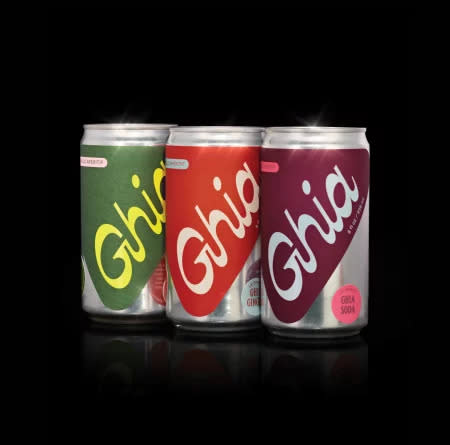
$60
Ghia Le Spritz (12-Pack)
Ghia’s stylish non-alcoholic apéritif has become a bar cart must-have, but in my opinion it’s their sparkly Le Spritz cans that really shine. Made from a blend of botanical extracts and herbs, each flavor (Ginger, Lime & Salt, and their signature Ghia) is refreshingly bitter and bitey without being overly sweet. As an apéritif, they’re meant to be enjoyed before dinner, but they’re lovely after dinner or even as a night cap. I prefer to drink them straight up, ice cold in a fancy cocktail glass but others have pointed out that they make a great mixer as well.
– Sara Goldstein, Associate Director Commerce Editorial Strategy
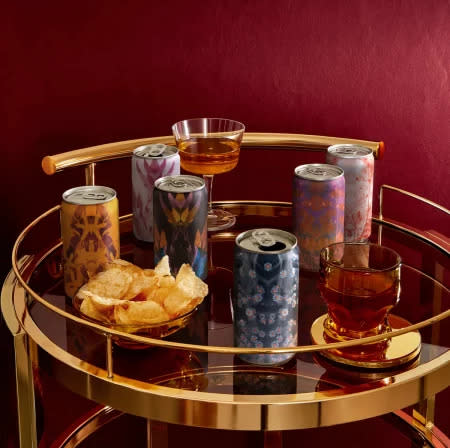
$35
Kally Curiosity Collection (8-Pack)
I’ve tried dozens of non-alcoholic drinks but none have delighted me the way Kally does. Whereas other wine stand-ins often lack the complexity that makes it enjoyable in the first place, Kally is just the opposite. The sophisticated blends of verjus (a juice pressed from young tart chardonnay grapes), decaffeinated tea extracts and botanicals create layered flavors that are unlike anything I’ve ever tasted. Even more impressively, they linger in your mouth, making each one a total experience.
In the line up you’ll find Jasmine Spice, Orchard Sage, Berry Fennel and Vanilla Smoke along with two sparkling options, Orchard Sage Spritz, Berry Fennel Spritz. They’re sweet, but not too sweet, and in all honesty, I love every single one. But if I had to choose a favorite it would be the Vanilla Smoke. As a mezcal lover, the rich smokiness of Lapsang Souchong tea along with the sweetness of Madagascar vanilla hits all the right notes. It’s a drink that’s made to savor!
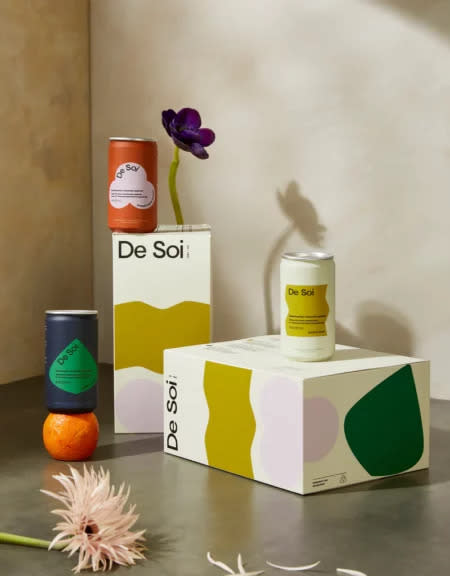
$70
De Soi Can Variety Pack (12-Pack)
One look at De Soi and you know you’re in for a full sensory experience. First of all, the entire brand aesthetic is perfection. (A can of Truly could never.) But obviously, it’s what’s inside that really counts–and that’s where the party starts. The trio of flavors, which include Golden Hour (L-theanine, citrus and leafy herbs), Champignon Dreams (reishi mushroom, passion flower, strawberries and bitter grapefruit), and my personal favorite, Purple Lune (ashwagandha, tart cherry, vanilla oak, and rose petals) are bubbly and botanical with notes that will surprise even the most adventurous palates. Each sip is worth savoring and while my preference is to drink them ice cold and straight up, they’ve got some fun recipe ideas to try as well.
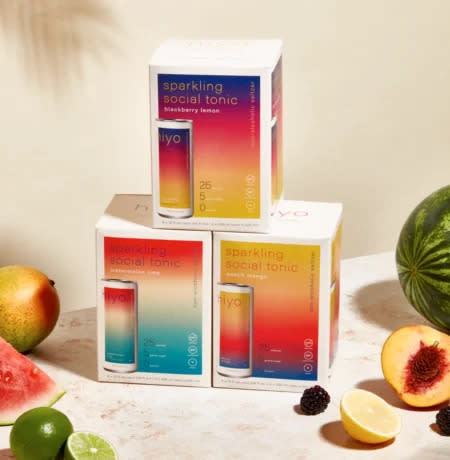
$44.99
Hiyo
Light but layered and absolutely perfect for poolside hangs, Hiyo’s “sparkling social tonics” are a sensorial delight. Along with palate-pleasing fruits like blackberry and lemon, watermelon and lime, and peach and mango, each of the flavors contain adaptogens, nootropics and botanicals which can contribute to a feeling of calm relaxation. (A feeling they refer to as “the float.”) They’re not overly sweet at all with tasty fruity notes and not a hint of bitterness or metallic flavor that you can sometimes expect with similar drinks. Consider it your happiest Happy Hour!
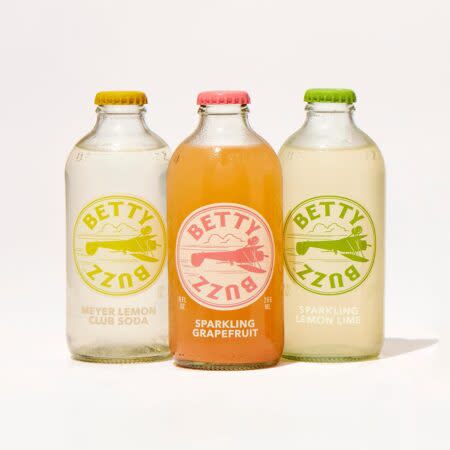
$34.99 (12-Pack)
Betty Buzz Premium Sparkling Soda
If you’d rather skip the botanicals and go for something a little simpler, we love the sparkly, clean sodas from Betty Buzz. They’re lightly sweetened with agave syrup, with fresh citrusy flavors that make great mocktail (or cocktail) mixers or stand on their own. (The grapefruit is our number one. It’s like Fresca’s bougier, classier cousin.) Also, the old-timey glass bottles are perfect for parties and even upcycling for backyard flower arrangements!
